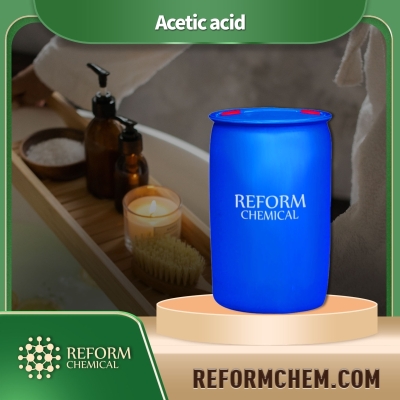-
Categories
-
Pharmaceutical Intermediates
-
Active Pharmaceutical Ingredients
-
Food Additives
- Industrial Coatings
- Agrochemicals
- Dyes and Pigments
- Surfactant
- Flavors and Fragrances
- Chemical Reagents
- Catalyst and Auxiliary
- Natural Products
- Inorganic Chemistry
-
Organic Chemistry
-
Biochemical Engineering
- Analytical Chemistry
-
Cosmetic Ingredient
- Water Treatment Chemical
-
Pharmaceutical Intermediates
Promotion
ECHEMI Mall
Wholesale
Weekly Price
Exhibition
News
-
Trade Service
Klebsiella pneumoniae (KP) belongs to the Enterobacteriaceae genus Klebsiella, and its diseases rank first in the genus Klebsiella, which can cause community and hospital-acquired pneumonia, sepsis, meningitis, bacterial tissue abscess and other infections
。 At present, KP is often divided into ordinary KP and high virulent KP (hypervirulent KP, hvKP) according to the virulence characteristics of KP, of which ordinary KP is often colonized in the upper respiratory tract and digestive tract, and can cause lung infection, abdomen, wounds, blood, soft tissues and other infections when the body's immune function is low, which is the main condition pathogenic bacteria
.
This article focuses on the clinical manifestations, risk factors, and prevention and treatment strategies
of KP infection.
Epidemiology.
People are the main host of KP, in the general community, 5%~38% of people carry KP in feces, and 1%~6% of people carry KP
in the nasopharynx.
In healthy adult feces in some Asian countries, such as Malaysia, Singapore, China, Japan, Thailand and Vietnam, the colonization rate of KP was 87.
7%, 61.
1%, 75.
0%, 18.
8%, 52.
9%, and 41.
3%,
respectively.
KP can cause community-acquired or hospital-acquired pneumonia
.
and the carrier rate of KP in hospitalized patients is much higher than that in the community, which may lead to nosocomial outbreaks
.
Studies have shown that the KP carrier rate
in the feces of hospitalized patients can be as high as 77%.
Overall, KP infections account for approximately 11.
8%
of hospital-acquired pneumonia worldwide.
In patients with pneumonia on ventilators, 8%~12% are caused by KP, while only 7%
of patients without ventilators have KP infections.
The mortality rate of patients with alcohol and sepsis after infection with KP is 50%~100%.
In addition, compared with ordinary KP, hvKP
was first discovered in Taiwan in 1986.
This bacterium is the main cause of purulent liver abscess, mainly infecting healthy individuals in the community, and has the characteristics of multiple foci of
infection, rapid disease progression, and poor prognosis.
In the decades following its discovery, hvKP spread globally and caused a variety of infections, including in the United States, Australia, Mexico and South Korea, but most in Asia
.
KP often colonizes the upper respiratory tract and digestive tract (colonization rates vary widely among individuals) without causing any symptomatic illness, but bacterial colonization may turn into infection when host immunity fails to control pathogen growth, such as in patients with diabetes, glucocorticoids, and organ transplantation
.
Distinguishing colonization from infection can influence subsequent intervention strategies, taking into account the following factors:
➤ Usually blood is sterile and detection of KP in blood indicates infection
.
The respiratory, urinary tract, and digestive tract may colonize
KP.
➤ Colonization and infection
should be distinguished based on the patient's symptoms, clinical signs, laboratory tests, and imaging data.
For example, a patient with fever, cough, sputum production, elevated white blood cells, and imaging findings of pneumonia in the lungs may be a respiratory infection
of KP.
➤ KP infection
should be considered when KP cultures are positive in patients with underlying medical conditions such as chronic obstructive pulmonary disease, diabetes, heart disease, organ transplantation, or recent glucocorticoid or antimicrobial use.
In summary, KP infection usually originates from colonizing bacteria in the host, and clinical and etiological tests should be combined to distinguish infection from colonization
.
The clinical presentation of pneumonia caused by KP is similar
to that of community-acquired pneumonia.
Patients may present with cough, fever, pleuritic chest pain, and shortness
of breath.
The clear difference between Streptococcus pneumoniae and KP in community-acquired pneumonia is the difference
in sputum.
Sputum in patients with Streptococcus pneumoniae infection is often described as "bloody" or "rust-colored.
"
The sputum of KP-infected patients is "brick-red jelly-like sputum" because KP can cause significant inflammation and necrosis
of surrounding tissues.
Pneumonia caused by KP usually affects the upper lobe, but the lower lobe
can also be affected.
Examination usually reveals unilateral signs of consolidation
.
Laboratory analysis usually shows leukocytosis
.
Chest x-ray can help doctors narrow the differential diagnosis, and pneumonia caused by KP can lead to lobar invasion in the posterior right upper lung
.
Another nonspecific sign of KP on chest radiograph is the interlobar deflating sign, which is associated with
infection and inflammation.
KP infection can be confirmed
by sputum culture or blood culture analysis.
A patient's susceptibility to KP infection depends on the pathogen (e.
g.
, virulence factors and antibiotic resistance), intrinsic host factors (e.
g.
, genetics, age, and immune status), and extrinsic factors (e.
g.
, antibiotic use, environmental exposure, malnutrition, and alcohol abuse).
➤ Various virulence factors have been shown to help increase the infectivity of KP, including capsulas, lipopolysaccharides, adhesins and siderophores, especially in Carbapenem-resistant Klebsiella pneumoniae (CRKP)/hvKp
.
➤Intrinsic factors influencing host susceptibility to KP include genetics, age, and underlying disease
.
• Studies have shown that host genes, including Ctnnal1, Actl7a, Actl7b, and Bag4, may increase host susceptibility
to KP.
• Newborns, especially those born preterm or in an intensive care unit, are at increased risk of KP infection due to an underdeveloped immune system and immature gastrointestinal mucosal barrier
.
• Older patients are at higher risk of dying from KP infection, with studies estimating a 30% mortality rate after hospitalization with KP, mainly due to
inhalation of oropharyngeal flora.
• Other risk factors that increase susceptibility to KP include poor nutritional status or underlying medical conditions including diabetes, malignancy, hepatobiliary disease, chronic obstructive pulmonary disease, and renal failure
.
➤External factors including antibiotic and corticosteroid use, chemotherapy, transplantation, dialysis, hospitalization and intensive care unit retention, personal habits, invasive medical procedures such as endoscopy, subcutaneous injection, etc.
, can lead to disruption of the mucosal barrier at the colonization site, translocating the colonizing bacteria and establishing infection
.
➤ Identify and control KP sources
• Interventions such as screening, identification, patient education, and exposure prevention of KP are essential
to stop the spread of KP at its source.
• Antibiotics should be managed and used in strict accordance with guidelines and principles to minimize their misuse
.
➤ Prevent the spread of KP
• Hand hygiene is the most basic, effective and economical strategy
to reduce cross-infection and prevent healthcare workers from becoming vectors of KP.
At the same time, environmental surface disinfection
should be carried out.
• Avoid or limit and shorten the use of invasive procedures and indwelling devices, such as central venous catheters, endotracheal catheters
, as much as possible.
• In patients using indwelling devices, care should be taken to monitor screening samples for the presence of pathogens
in relevant sites (e.
g.
, skin, urine, sputum, and wound secretions).
➤ Protect susceptible people
• Improve autoimmunity: including regular exercise, adequate sleep, quitting smoking, healthy eating, etc
.
• Antibodies and vaccines: KP covers polysaccharides, including capsulins and lipopolysaccharides, and is an ideal candidate antigen
for vaccine or host-targeted immunity.
Antibodies and vaccines against capsular polysaccharides are currently being developed, and it is critical
to identify highly conserved antigens of KP strains to develop antibodies or vaccines with comprehensive coverage and broad protection across strains.
Once KP infection is suspected or confirmed, treatment
should be tailored to antibiotic sensitivity.
Current treatment regimens for community-acquired Klebsiella pneumoniae include 14 days of third- and fourth-generation cephalosporin monotherapy, respiratory quinolone monotherapy, or a combination of aminoglycosides
.
If the patient is allergic to penicillin, aminotreonam or respiratory quinolone should be treated
.
Nosocomial infections can be treated with carbapenem antibiotics until susceptibility
is reported.
When extended-spectrum beta-lactamase (ESBLs) KP is infect β ed, carbapenems should be treated
.
In CRKP infection, infection consultation should be considered, and antibiotics should be treated with combination therapy with polymyxin, tigecycline, fosfomycin, aminoglycosides, or carbapenems
.
Two or more drug combinations reduce mortality
compared with monotherapy.
References:
1.
Ashurst JV, Dawson A.
Klebsiella Pneumonia.
[Updated 2022 Feb 2].
In: StatPearls [Internet].
Treasure Island (FL): StatPearls Publishing; 2022 Jan.
2.
Chang D, Sharma L, Dela Cruz CS, Zhang D.
Clinical Epidemiology, Risk Factors, and Control Strategies of Klebsiella pneumoniae Infection.
Front Microbiol.
2021 Dec 22; 12:750662.
3.
HUANG Yun,LI Congrong.
Research progress of Klebsiella pneumoniae with high virulence[J].
Laboratory Medicine,2021,36(11):1181-1185.
)
4.
Xu Qin.
Clinical research progress of Klebsiella pneumoniae with high virulence[J].
Anti-infective Pharmacy,2022,19(01):1-4.
)
5.
MENG Fengjie,KANG Yi,ZENG Yanli.
Research progress of Klebsiella pneumoniae[J].
Henan Medical Research,2020,29(02):383-386.
)
6.
Wang Minggui, et al.
Experimental diagnosis, antibacterial therapy and nosocomial infection control of extensively drug-resistant gram-negative infections:Chinese expert consensus[J].
Chinese Journal of Infection and Chemotherapy,2017,17(01):82-92.
)







